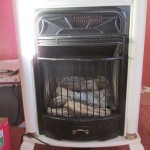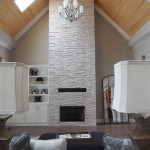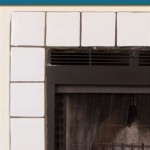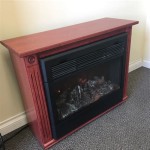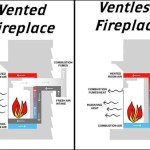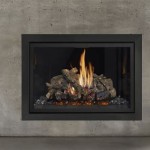The Allure and Practicality of Lighted Fireplace Logs
Lighted fireplace logs offer a combination of aesthetic appeal and functional convenience, making them an increasingly popular choice for homeowners seeking the ambiance of a traditional fireplace without the associated complexities and maintenance. These logs provide a visually realistic flame effect, often coupled with a heating element, to simulate the warmth and atmosphere of a wood-burning fire. They come in various forms, utilizing different technologies to achieve the flame illusion, and cater to a diverse range of preferences and needs.
The primary advantage of lighted fireplace logs lies in their ease of use and maintenance. Unlike traditional fireplaces, which require wood storage, ash removal, and chimney cleaning, electric or gas-powered logs operate with minimal effort. With the simple flick of a switch or remote control activation, the logs instantly provide a visual and, in some cases, heating effect. This ease of operation makes them particularly suitable for individuals with mobility limitations or those who simply prefer a low-maintenance alternative.
Furthermore, lighted fireplace logs offer a degree of safety that surpasses that of traditional wood-burning fireplaces. The absence of open flames and combustible materials significantly reduces the risk of fire hazards, making them a safer option for homes with children or pets. The heat output is often adjustable, allowing users to control the temperature and prevent overheating. Many models also incorporate safety features such as automatic shut-off mechanisms in case of tipping or overheating.
Types of Lighted Fireplace Logs and Their Technologies
Lighted fireplace logs encompass a range of technologies, each offering a unique approach to creating the flame illusion. The most common types include electric fireplace logs and gas fireplace logs, each with its own set of advantages and disadvantages.
Electric fireplace logs utilize LED lighting and reflective surfaces to simulate the appearance of flickering flames. These logs are typically powered by standard electrical outlets and produce heat through an integrated heating element. The flame effect is often adjustable, allowing users to customize the brightness and intensity. Some advanced models even incorporate realistic crackling sounds to further enhance the sensory experience. Electric logs are generally energy-efficient and relatively inexpensive to operate, making them a popular choice for supplemental heating and decorative purposes.
Gas fireplace logs, on the other hand, utilize natural gas or propane to produce a real flame, albeit contained within a controlled environment. These logs are typically installed within an existing fireplace opening and connected to a gas line. While they offer a more realistic flame appearance than electric logs, they require professional installation and may involve higher operating costs. Gas logs also generate more heat, making them suitable for larger spaces or for individuals seeking a more substantial heating source. Safety precautions are paramount when using gas fireplace logs, including ensuring proper ventilation and regular maintenance to prevent gas leaks.
Within each category, manufacturers offer variations in design, size, and features. Some logs are designed to mimic the appearance of specific wood species, such as oak or birch, while others offer more contemporary or abstract designs. The size of the log set should be chosen based on the dimensions of the fireplace opening to ensure a proper fit and aesthetic appeal.
Considerations for Selecting Lighted Fireplace Logs
Choosing the right lighted fireplace logs requires careful consideration of several factors, including the desired aesthetic, heating requirements, installation constraints, and budget. Evaluating these factors will help ensure that the selected logs meet the specific needs and preferences of the homeowner.
The aesthetic appeal of the logs is a primary consideration. Homeowners should choose logs that complement the existing decor of the room and create the desired ambiance. Consider the shape, size, and color of the logs, as well as the realism of the flame effect. Online retailers and showrooms often offer a wide selection of logs with varying designs, allowing homeowners to compare different options and find the perfect match for their style.
The heating requirements of the space should also be taken into account. If the primary purpose of the logs is to provide supplemental heating, then the BTU output of the heating element should be sufficient to warm the desired area. Electric logs typically offer a range of heat settings, allowing users to adjust the temperature based on their comfort level. Gas logs, on the other hand, generate more heat and may be more suitable for larger rooms or for individuals seeking a more substantial heating source.
Installation constraints are another important consideration. Electric logs are relatively easy to install, requiring only a standard electrical outlet. Gas logs, however, require professional installation and connection to a gas line. Before purchasing gas logs, it is essential to consult with a qualified technician to ensure that the existing fireplace opening is suitable and that the installation is performed safely and according to local codes.
Finally, the budget should be factored into the decision-making process. Lighted fireplace logs range in price depending on the technology, size, features, and brand. Electric logs are generally less expensive than gas logs, both in terms of initial purchase price and operating costs. However, gas logs offer a more realistic flame appearance and may provide more heat. Homeowners should weigh the costs and benefits of each type of log before making a purchase.
Benefits Beyond Aesthetics and Heating
While the aesthetic appeal and heating capabilities are the most prominent benefits of lighted fireplace logs, there are several other advantages that contribute to their overall value. These include improved air quality, increased energy efficiency, and enhanced safety features.
Unlike traditional wood-burning fireplaces, lighted fireplace logs do not produce smoke or other harmful emissions. This makes them a much cleaner and healthier option for indoor air quality. Electric logs, in particular, are completely emission-free, while gas logs produce minimal emissions compared to wood-burning fires. By eliminating the need for wood combustion, lighted fireplace logs help reduce the risk of respiratory problems and improve the overall air quality in the home.
Lighted fireplace logs can also contribute to increased energy efficiency. Electric logs typically consume less energy than traditional wood-burning fireplaces, as they only use electricity to power the flame effect and heating element. Gas logs, while requiring a gas connection, can be more energy-efficient than wood-burning fires, as they burn fuel more completely and efficiently. By using lighted fireplace logs, homeowners can reduce their energy consumption and lower their heating bills.
In terms of safety, lighted fireplace logs offer several advantages over traditional fireplaces. The absence of open flames and combustible materials significantly reduces the risk of fire hazards. Electric logs are particularly safe, as they do not produce any flames or sparks. Gas logs, while producing a real flame, are typically equipped with safety features such as automatic shut-off mechanisms and oxygen depletion sensors to prevent gas leaks and carbon monoxide poisoning. These safety features provide peace of mind and make lighted fireplace logs a safer option for homes with children or pets.
Moreover, many modern lighted fireplace logs are equipped with remote controls, allowing users to adjust the flame intensity, heat output, and other settings from the comfort of their couch. This convenience further enhances the user experience and makes lighted fireplace logs a more practical and enjoyable alternative to traditional fireplaces. The ability to easily control the settings also contributes to energy efficiency, as users can adjust the heat output based on their needs and prevent overheating.
In conclusion, lighted fireplace logs offer a compelling combination of aesthetic appeal, functional convenience, and enhanced safety. They provide a realistic flame effect without the hassles and hazards of traditional wood-burning fireplaces. By carefully considering the different types of logs, aesthetic preferences, heating requirements, and installation constraints, homeowners can choose the perfect lighted fireplace logs to create a warm, inviting, and safe environment in their homes.

Electric Log Sets Fireplace Logs Napoleon Fireplaces

Napoleon Woodland 27 Inch Electric Fireplace Log Insert Heater Set Nefi27h Fireplaces Depot

Pleasant Hearth 20 In W Natural Wood Electric Fireplace Logs At Com

Intu Range Of Recessed Electric Fireplaces Ignis S

Duraflame 20 In Electric Fireplace Log Set Heater With Realistic Ember Bed Antique Broe Dfi021aru The Home Depot

Dimplex 25 In Revillusion Electric Fireplace Log Set W Ashmat Rlg25 Wm Dyck Sons

Dimplex 33 Inch Self T Electric Fireplace Inner Glow Logs Df3033st Hvacdirect Com

Dimplex Revillusion 20 Inch Plug In Log Set With Fresh Cut

Electric Fireplace Logs Modern Flames

Lifeplus Electric Fireplace Insert Log Heater W Quartz Realistic Ember Bed Remote Control Com
Related Posts

